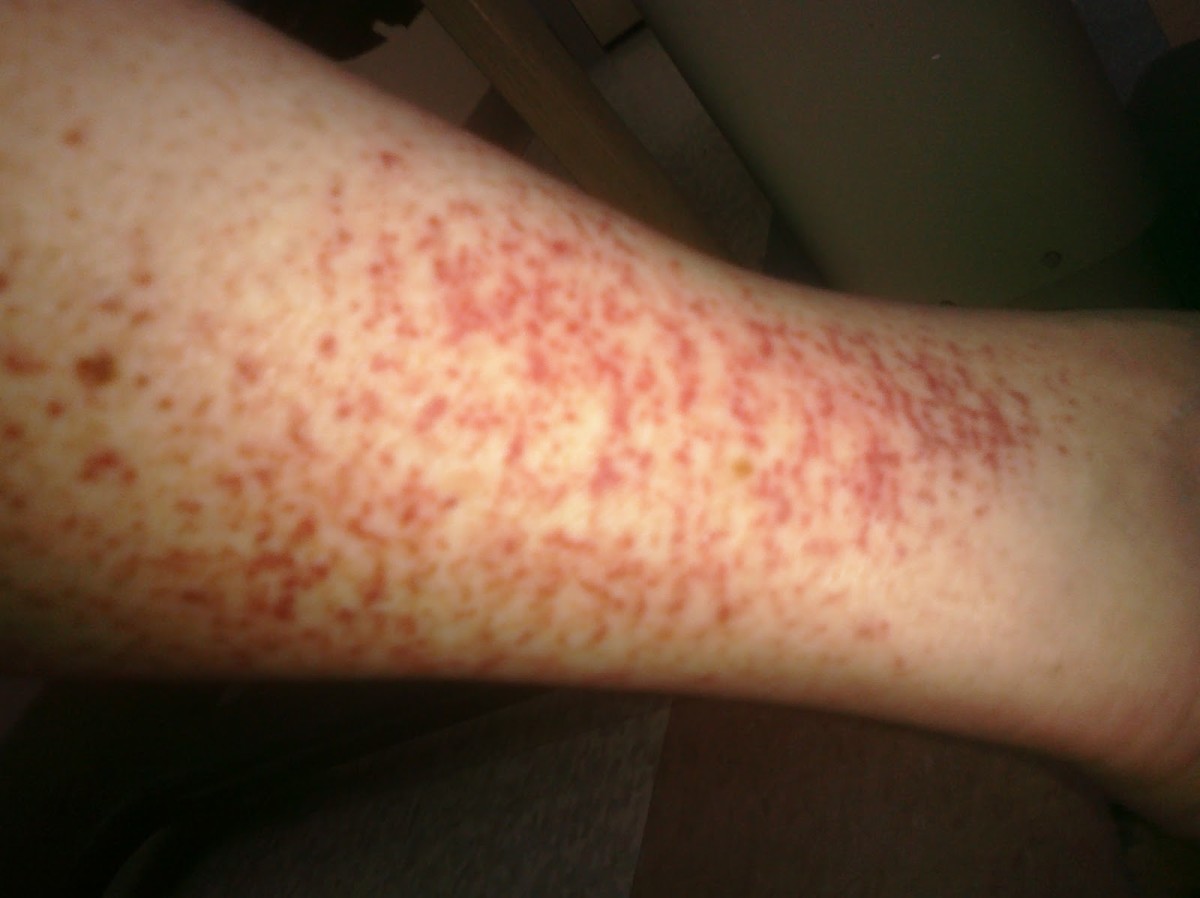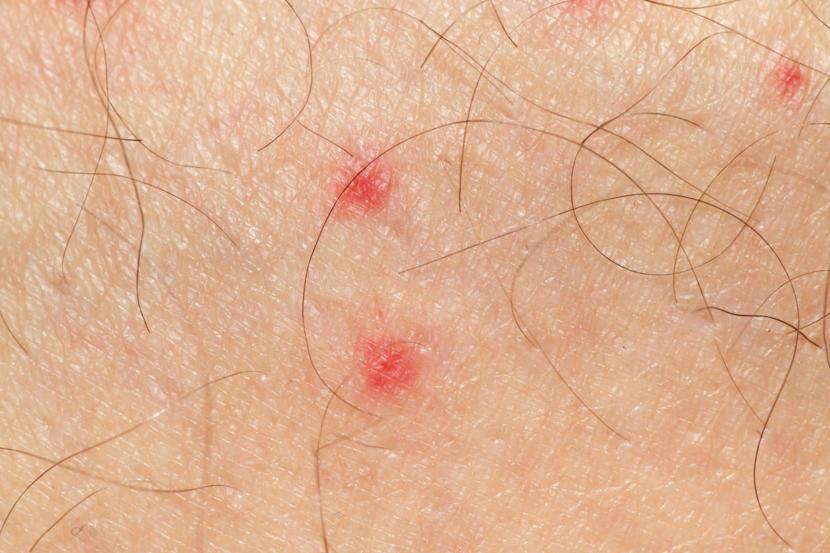Petequias En La Piel, or petechiae, are tiny, pinpoint-sized red or purple spots that appear on the skin. These lesions, often harmless, can also signal underlying medical conditions, ranging from minor infections to serious bleeding disorders. Understanding the causes, symptoms, and potential implications of petechiae is crucial for timely diagnosis and appropriate treatment. This comprehensive overview delves into the various aspects of petechiae, from their visual characteristics to effective management strategies.
This article will explore the diverse factors that contribute to the development of petechiae, including blood clotting disorders, infectious diseases, and certain medications. We will also differentiate between benign and serious causes, highlighting the importance of seeking medical attention when necessary. Furthermore, we will examine diagnostic procedures, treatment options, and preventative measures to help readers understand and manage this common dermatological finding.
Petequias En La Piel: A Comprehensive Overview
Petequias, small, pinpoint-sized red or purple spots on the skin, are a common clinical finding. Understanding their causes, associated symptoms, and diagnostic approaches is crucial for effective medical management. This article provides a detailed overview of petechiae, addressing their characteristics, common causes, associated conditions, diagnostic procedures, treatment options, prevention strategies, and illustrative examples.
Definition and Characteristics of Petechiae
Petechiae are defined medically as tiny, non-blanching hemorrhages into the skin. This means they are small bleeds that do not fade when pressure is applied. They typically appear as round or oval spots, measuring less than 3 millimeters in diameter. Their color ranges from red to purple, depending on the age of the bleed and the individual’s skin tone.
On lighter skin, they appear as distinct red or purple dots. On darker skin tones, they might appear darker, and detection can be more challenging, sometimes requiring closer examination or using a magnifying glass. Petechiae are distinguished from purpura (larger, flat hemorrhages) and ecchymoses (bruises, larger than purpura).
| Lesion Type | Size (mm) | Appearance | Blanching |
|---|---|---|---|
| Petechiae | <1-3 | Pinpoint, round or oval | No |
| Purpura | >3 | Flat, larger than petechiae | No |
| Ecchymoses | Variable, >3 | Bruise, often raised | No |
Common Causes of Petechiae
The causes of petechiae vary widely depending on age and underlying health conditions. In adults, common causes include medications, infections, and blood clotting disorders. In children, infectious diseases are frequently implicated. Blood clotting disorders, such as thrombocytopenia (low platelet count), are a significant underlying factor in many cases.
Infectious diseases such as meningococcal meningitis can manifest with widespread petechiae. Several medications, including some antibiotics and anticoagulants, list petechiae as a potential side effect.
- Aspirin
- Heparin
- Warfarin
- Certain antibiotics
- Nonsteroidal anti-inflammatory drugs (NSAIDs)
Associated Symptoms and Medical Conditions
Petechiae often accompany other symptoms, depending on the underlying cause. Fever, fatigue, and joint pain might indicate an infection. Easy bruising and bleeding from the gums or nose suggest a blood clotting disorder. Serious medical conditions associated with petechiae include meningococcemia (a severe form of meningococcal disease), leukemia, and other hematological malignancies. Differentiating between harmless and serious causes often requires a thorough medical evaluation.
The presence of additional symptoms, such as fever, altered mental status, or severe bleeding, warrants immediate medical attention.
The following flowchart can aid in decision-making regarding the need for medical evaluation:
(Note: A visual flowchart would be included here in a published article, but a text-based representation is difficult to create effectively. The flowchart would illustrate decision points based on the presence or absence of symptoms like fever, bleeding, and altered mental status, leading to recommendations for seeking immediate medical attention versus observation.)
Diagnostic Procedures and Treatments

Source: hubstatic.com
Diagnosing the cause of petechiae typically involves a physical examination, review of medical history, and blood tests. Blood tests, including a complete blood count (CBC) and coagulation studies, are crucial to assess platelet count and clotting function. Further investigations, such as bone marrow biopsy, may be necessary in some cases. Treatment focuses on addressing the underlying cause. For example, if an infection is identified, antibiotics are administered.
If a blood clotting disorder is found, specific treatment for that disorder is initiated. Symptomatic management might include pain relief and supportive care.
| Cause | Diagnostic Test | Treatment |
|---|---|---|
| Infection | Blood cultures, other tests as indicated | Antibiotics |
| Thrombocytopenia | CBC, peripheral blood smear | Treatment of underlying cause, platelet transfusion if needed |
| Medication side effect | Medication review | Medication change or discontinuation |
Prevention and Self-Care Measures, Petequias En La Piel
Preventing petechiae involves maintaining good overall health, including a balanced diet rich in vitamins and minerals. Avoiding potential triggers, such as certain medications (when possible and under medical supervision), and managing underlying medical conditions can help reduce the risk. A healthy lifestyle, including regular exercise and stress management, also plays a crucial role. A personalized health plan, developed in consultation with a healthcare provider, is essential for individuals with recurrent petechiae or a history of bleeding disorders.
Illustrative Examples of Petequias En La Piel

Source: findatopdoc.com
Case Study: A 65-year-old woman presented with widespread petechiae, accompanied by fatigue and easy bruising. Blood tests revealed thrombocytopenia. Further investigation showed bone marrow suppression secondary to an autoimmune disorder. Treatment with corticosteroids and supportive care resulted in improvement of her symptoms and platelet count.
Description of Petechiae in Meningococcemia: In a case of meningococcemia, petechiae might appear as numerous, small, dark purple spots scattered across the skin, particularly on the extremities and trunk. The spots might coalesce to form larger areas of purplish discoloration. This widespread distribution is a significant clinical feature that demands urgent medical attention.
Descriptive Representation of Petechiae Distribution: Imagine a patient with petechiae concentrated primarily on the lower extremities, appearing as numerous small, dark red spots clustered together, particularly around the ankles and shins. A few isolated spots are visible on the arms, but the concentration is notably greater on the legs.
Last Word: Petequias En La Piel
The appearance of petechiae on the skin should not be taken lightly. While often benign, they can indicate a range of underlying health issues. This article has provided a detailed examination of petechiae, encompassing their definition, causes, associated symptoms, diagnostic methods, and treatment approaches. Remember, prompt medical evaluation is crucial for accurate diagnosis and appropriate management, ensuring optimal health outcomes.
Early detection and intervention can significantly improve prognosis and prevent potential complications associated with more serious underlying conditions.
